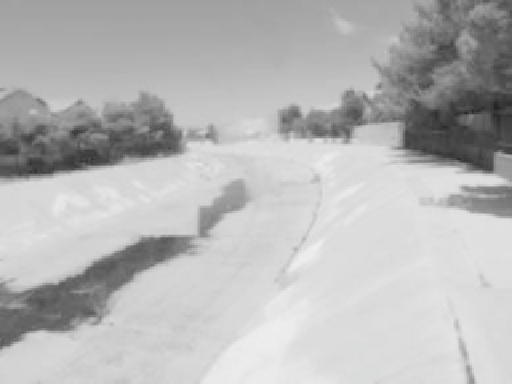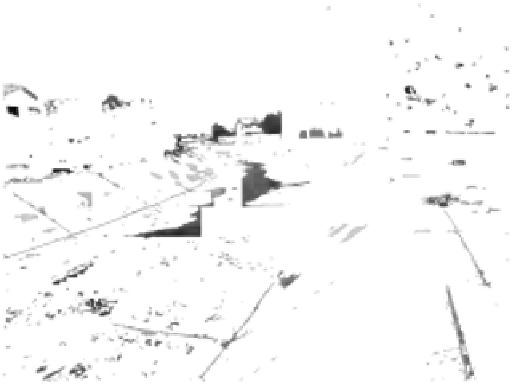Environmental Engineering Reference
In-Depth Information
be “different” or disturbing to neighbors, even if this involves retooling homes for solar
energy and gray water use. But the reliance on neighborhood associations to enforce such
covenants underscores the fact that such groups have no inherent shared vision of a good
life that would supersede any fears of diminished property values. The rapid turnover of
home ownership also hinders the development of communities of memory,
15
where people
have a common history and shared stories of who they are as part of living in a particular
place. The turnover in Green Valley prevents people from connecting with anyone other
than next-door neighbors and from developing a shared community memory.
Green Valley was built in a desert over shallow waterways. This disruption of the
natural hydrologic flow through this built environment illustrates the idea that human
communities are all too often created without careful consideration of the larger
surrounding biotic community. As more desert land is covered by concrete, the ambient
mean temperature of the area increases. This increased heat results in a further demand
on air conditioning, which places added demands on energy production. It is possible to
design with the desert in mind, as has been done elsewhere in the American Southwest,
to build homes that take advantage of natural cooling and shade features. But the home
designs have been copies primarily from places in a completely different biogeographic
zone such as south coastal California. Consequently, the homes built reflect little concern
for designing with nature, including, for example, shaded patios and desert-adapted trees.
Furthermore, in an attempt to deny the fact that Green Valley is in a desert, homes are
still being built with extensive grass lawns that require constant watering, placing further
burdens on the limited local water supply. An additional denial of the desert comes from
the way the dry streambeds have been straightened and made into concrete waterways
that turn into raging floods during the spring rainstorms (Figure 18.4). The water has no
opportunity to slowly sink into the desert soil, replenishing the aquifer, and is moved
directly out of the area into the Colorado River. As a result, the rain that used to replenish
the local water table is now added through increased surface runoff to the volume of the
river whose water itself is primarily sent to California, while Nevada must constantly
agitate for more water to support its growth.
FIGURE 18.4
A concrete drainage in Green Valley over a desert wash.


Search WWH ::

Custom Search